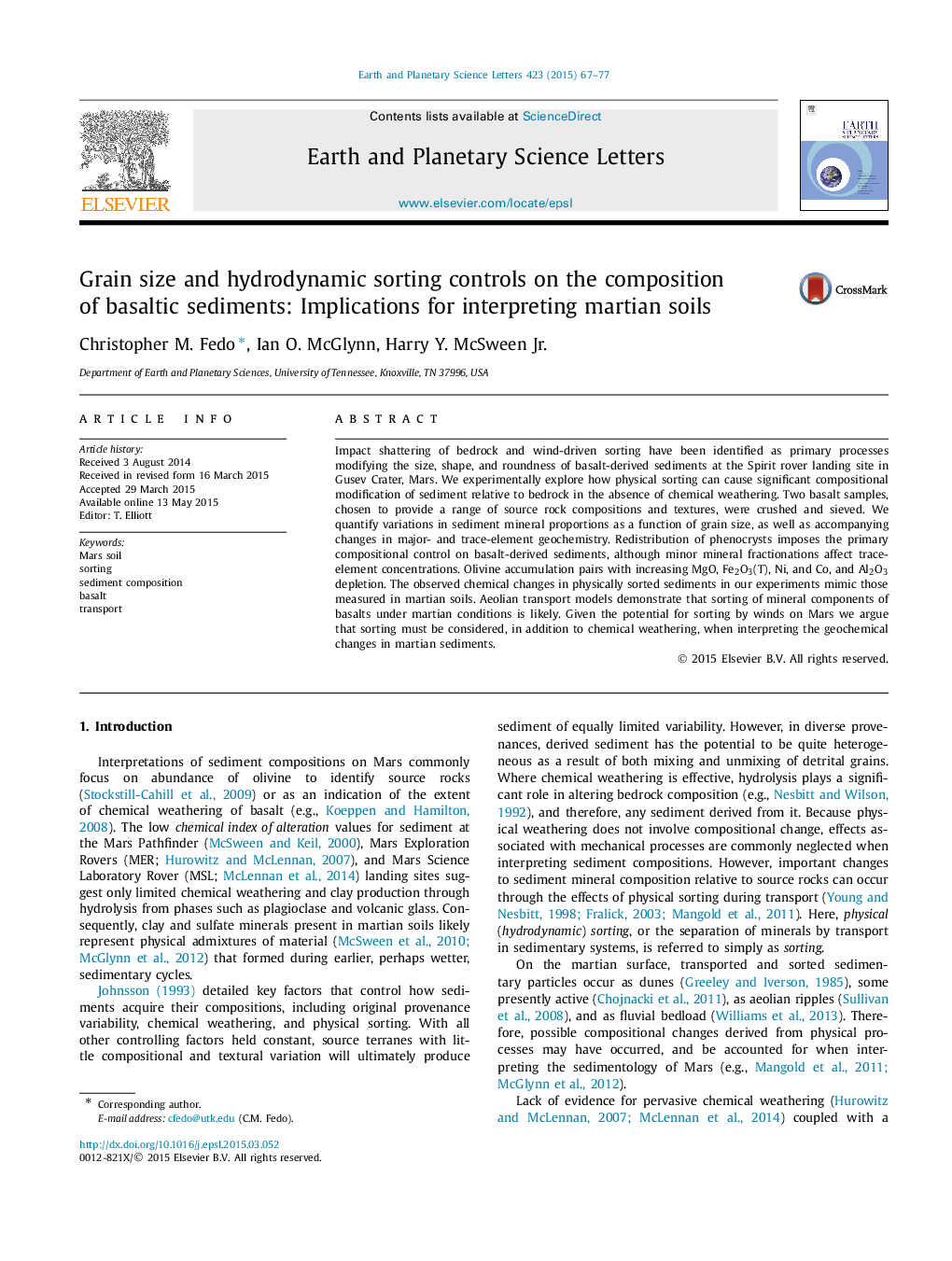| Article ID | Journal | Published Year | Pages | File Type |
|---|---|---|---|---|
| 4676968 | Earth and Planetary Science Letters | 2015 | 11 Pages |
•We created and sieved synthetic sediment by crushing two basalt samples.•Mineralogy and geochemistry of each grain-size fraction were determined.•Most sieve-fraction compositions vary from original basalt, so sorting is important.•Modeling suggests minerals of different density could separate under Mars conditions.•Active sand dunes suggest Mars soil compositions can be explained by sorting.
Impact shattering of bedrock and wind-driven sorting have been identified as primary processes modifying the size, shape, and roundness of basalt-derived sediments at the Spirit rover landing site in Gusev Crater, Mars. We experimentally explore how physical sorting can cause significant compositional modification of sediment relative to bedrock in the absence of chemical weathering. Two basalt samples, chosen to provide a range of source rock compositions and textures, were crushed and sieved. We quantify variations in sediment mineral proportions as a function of grain size, as well as accompanying changes in major- and trace-element geochemistry. Redistribution of phenocrysts imposes the primary compositional control on basalt-derived sediments, although minor mineral fractionations affect trace-element concentrations. Olivine accumulation pairs with increasing MgO, Fe2O3(T), Ni, and Co, and Al2O3 depletion. The observed chemical changes in physically sorted sediments in our experiments mimic those measured in martian soils. Aeolian transport models demonstrate that sorting of mineral components of basalts under martian conditions is likely. Given the potential for sorting by winds on Mars we argue that sorting must be considered, in addition to chemical weathering, when interpreting the geochemical changes in martian sediments.
